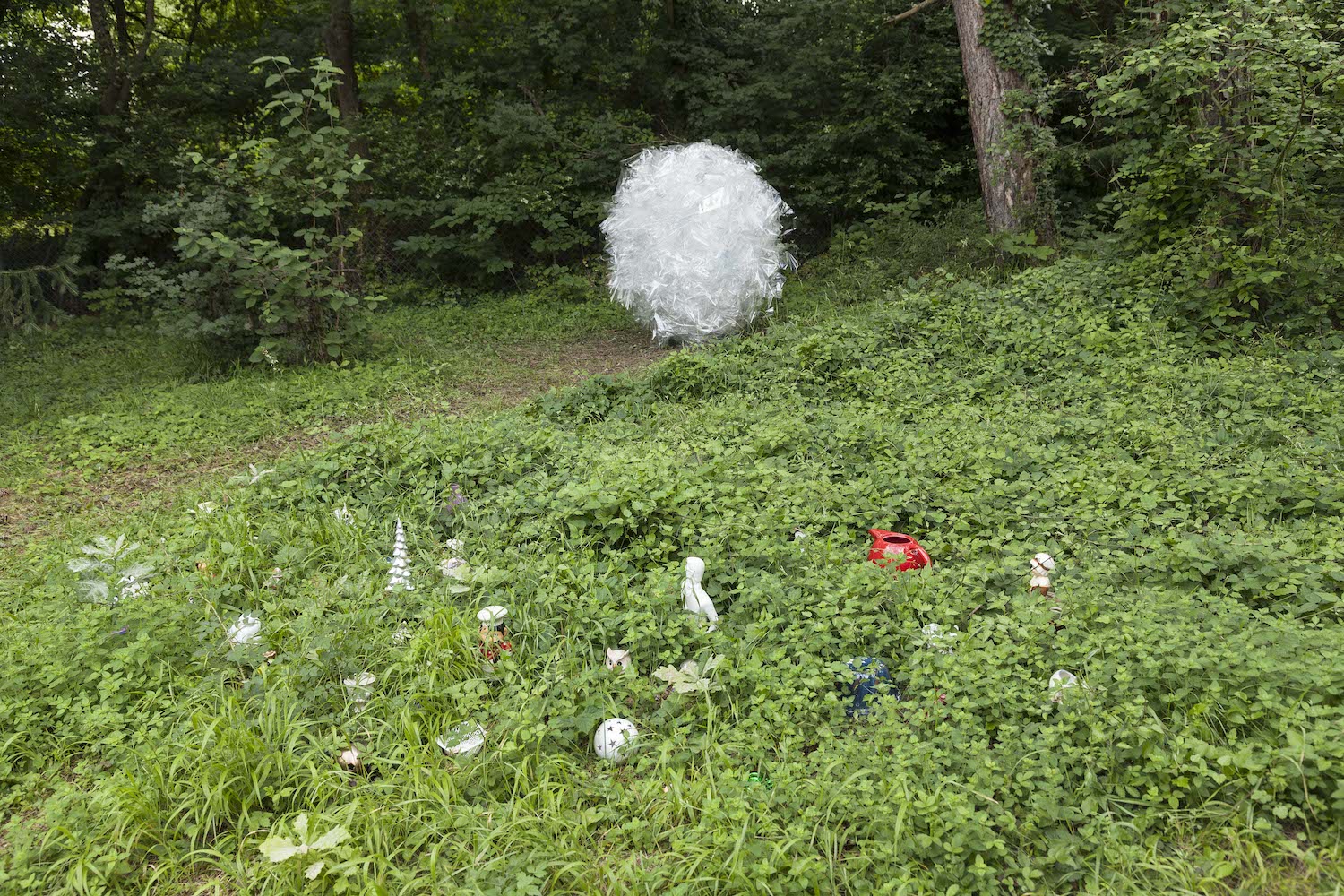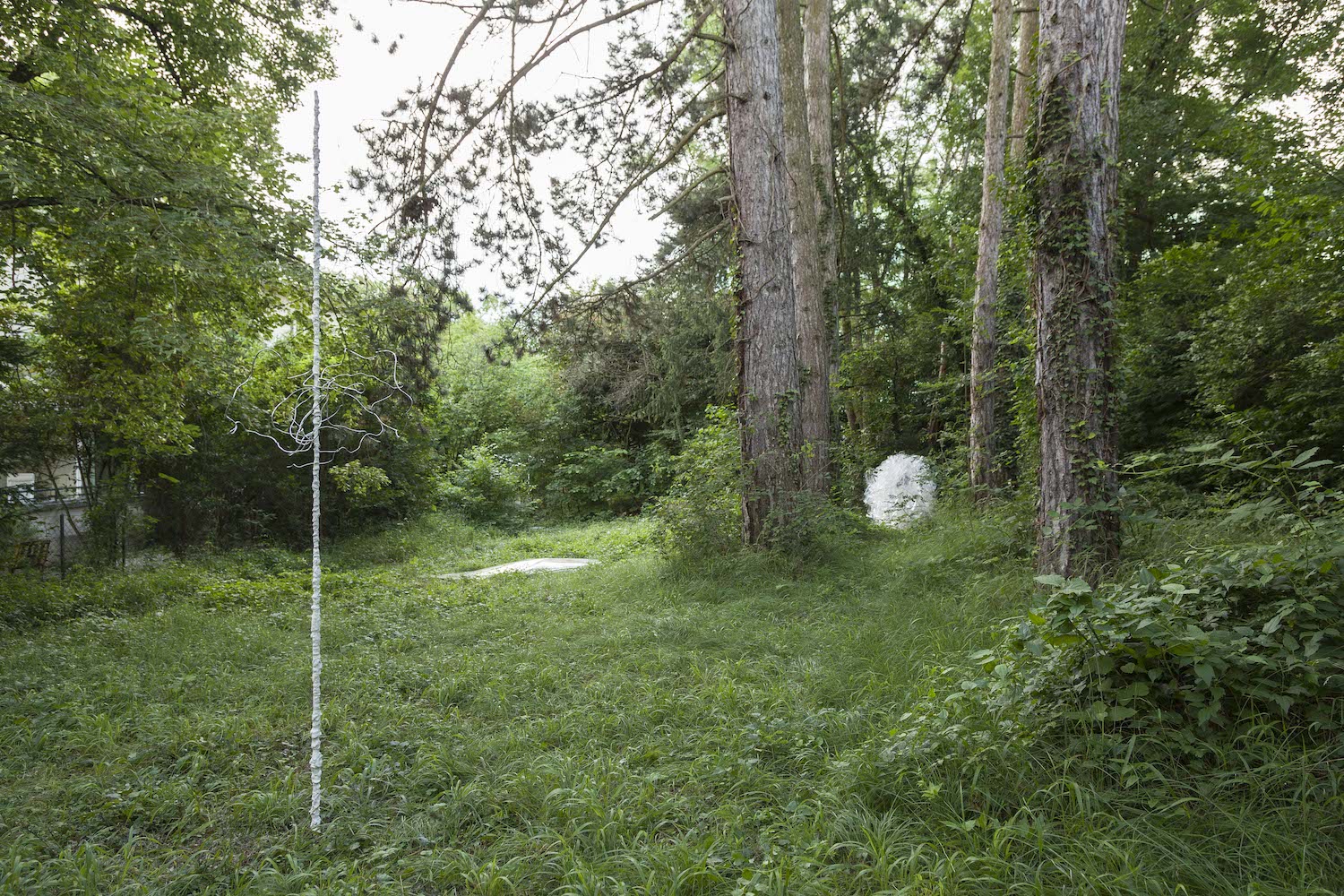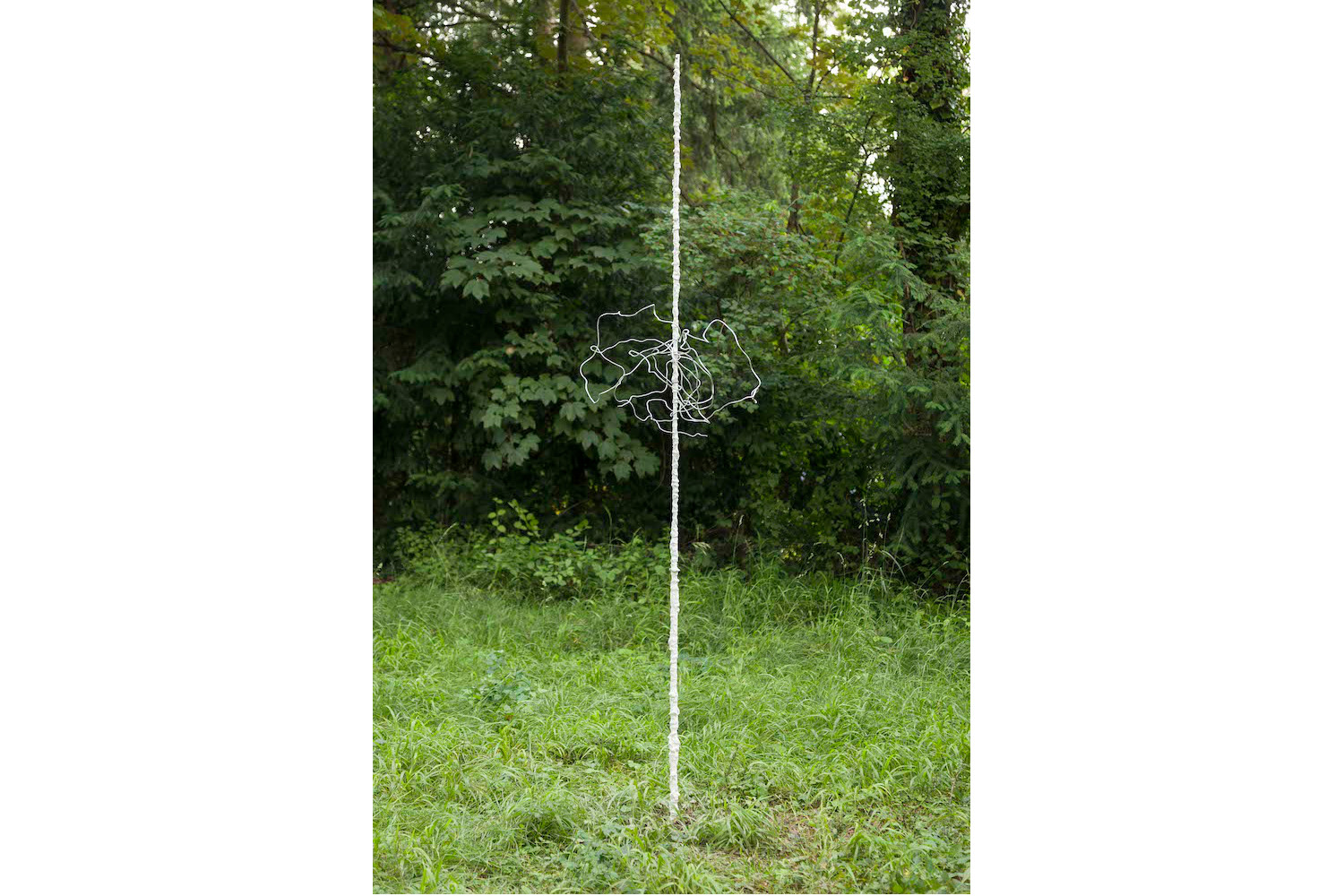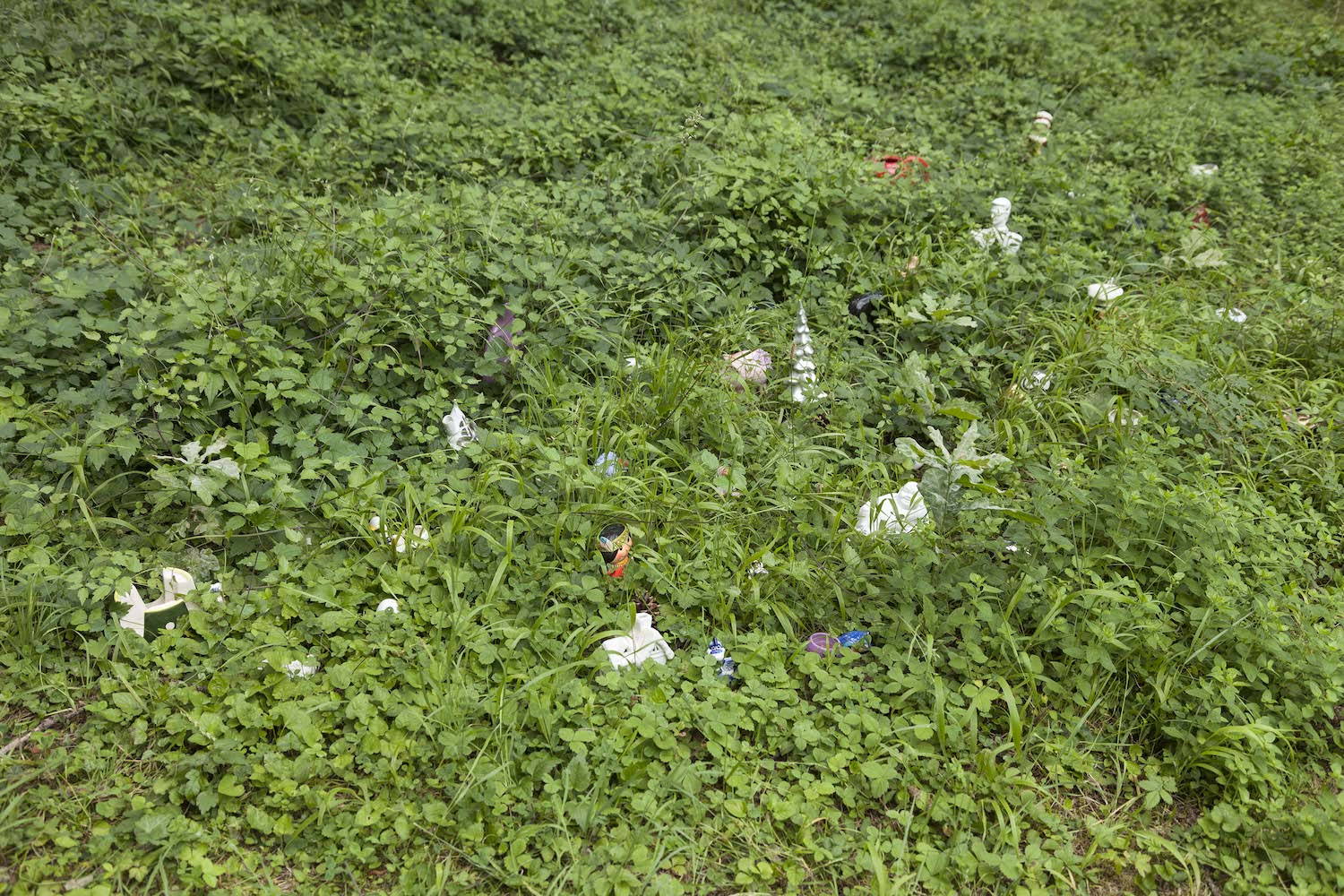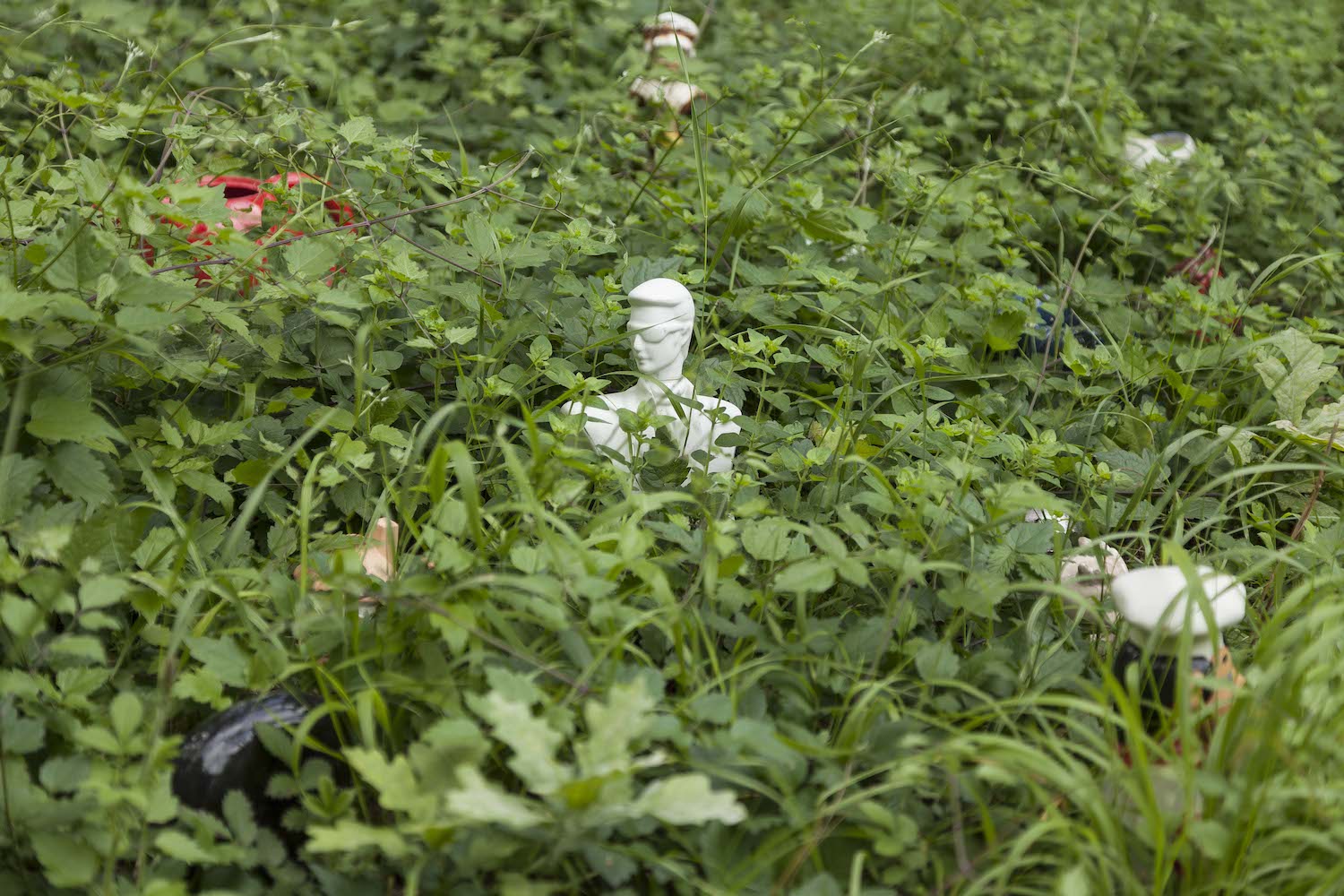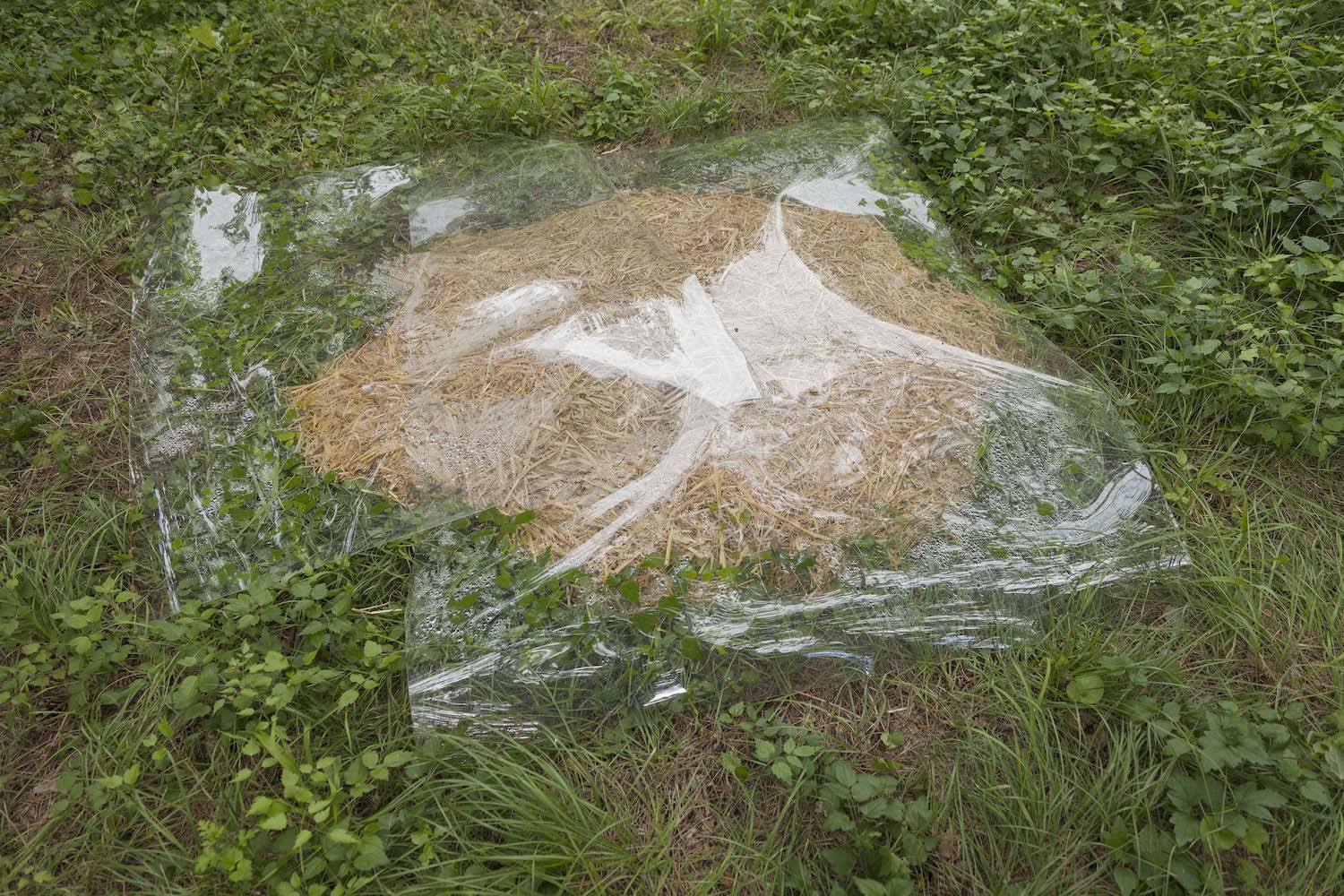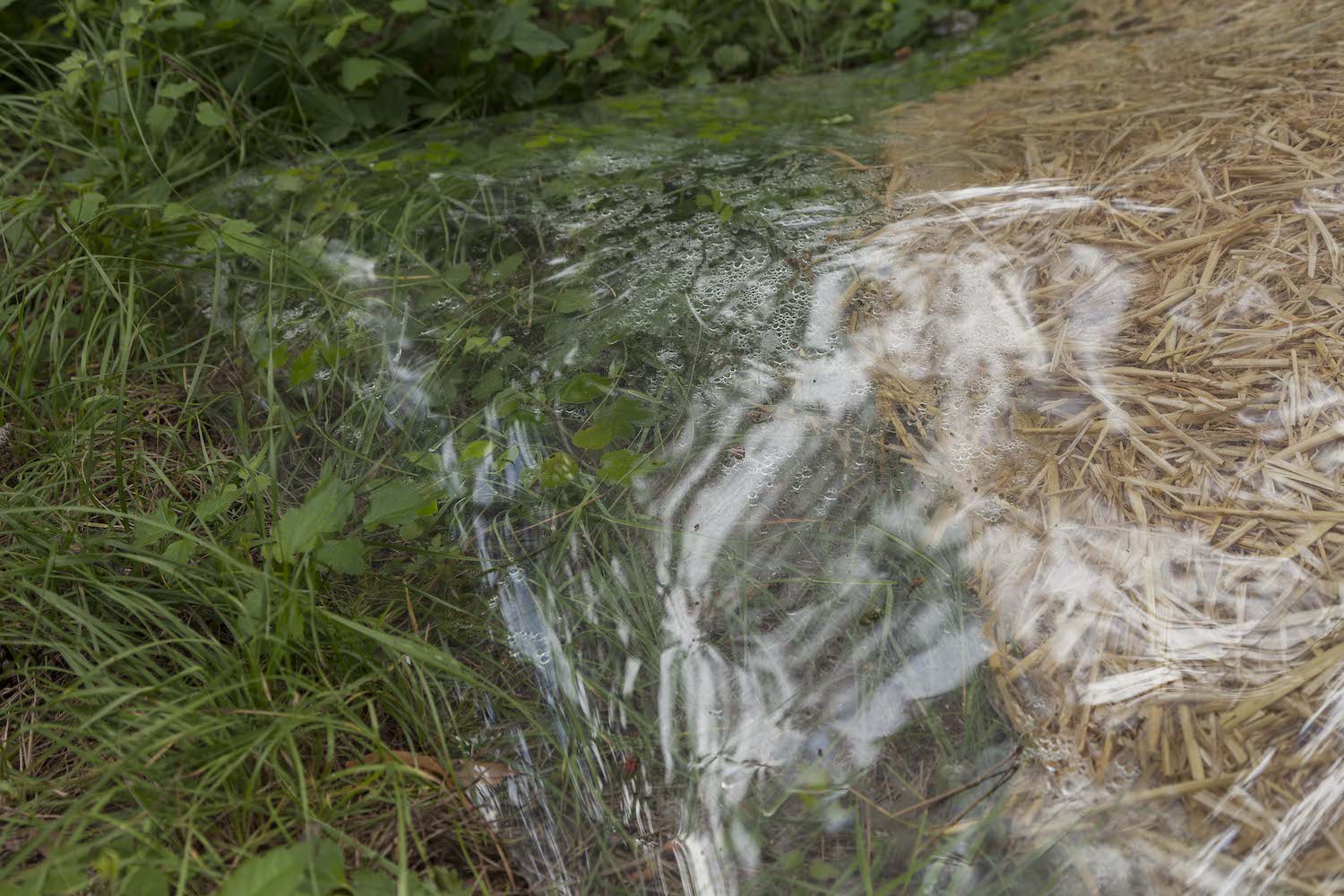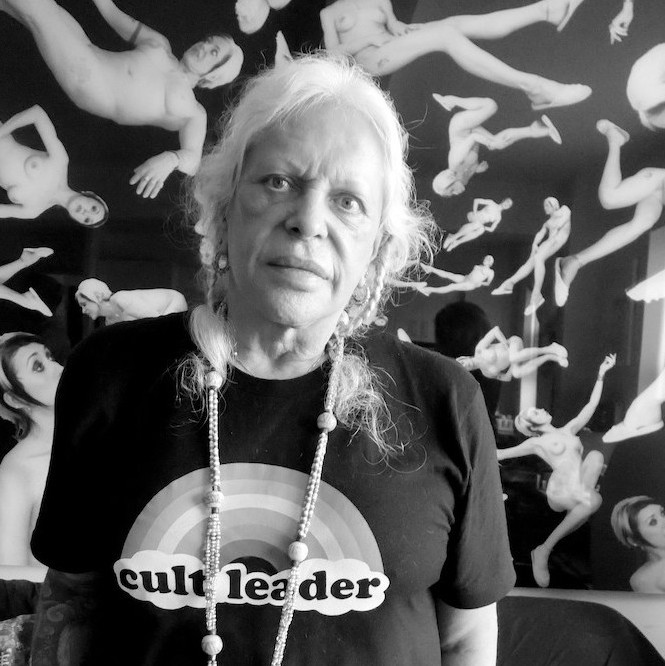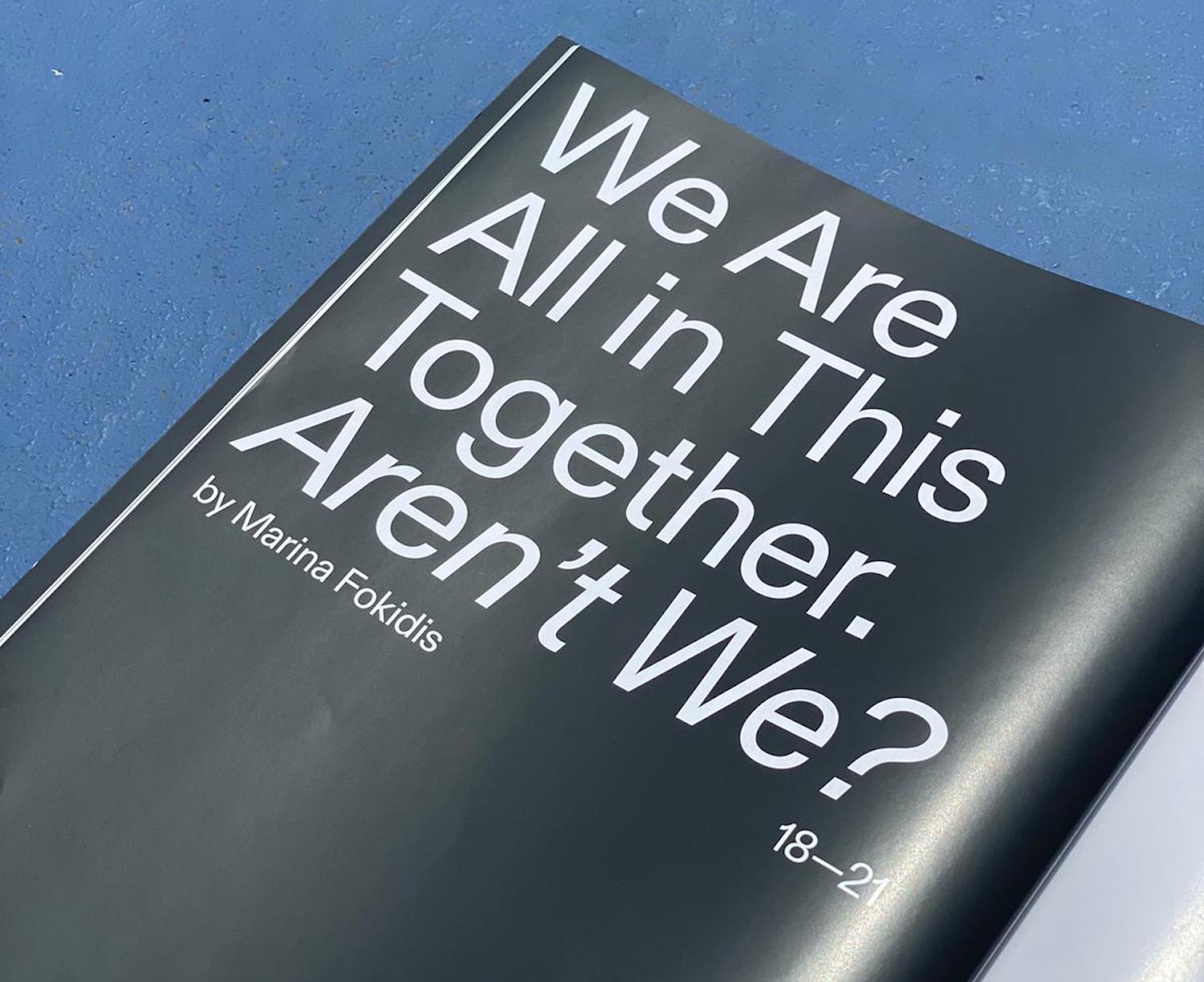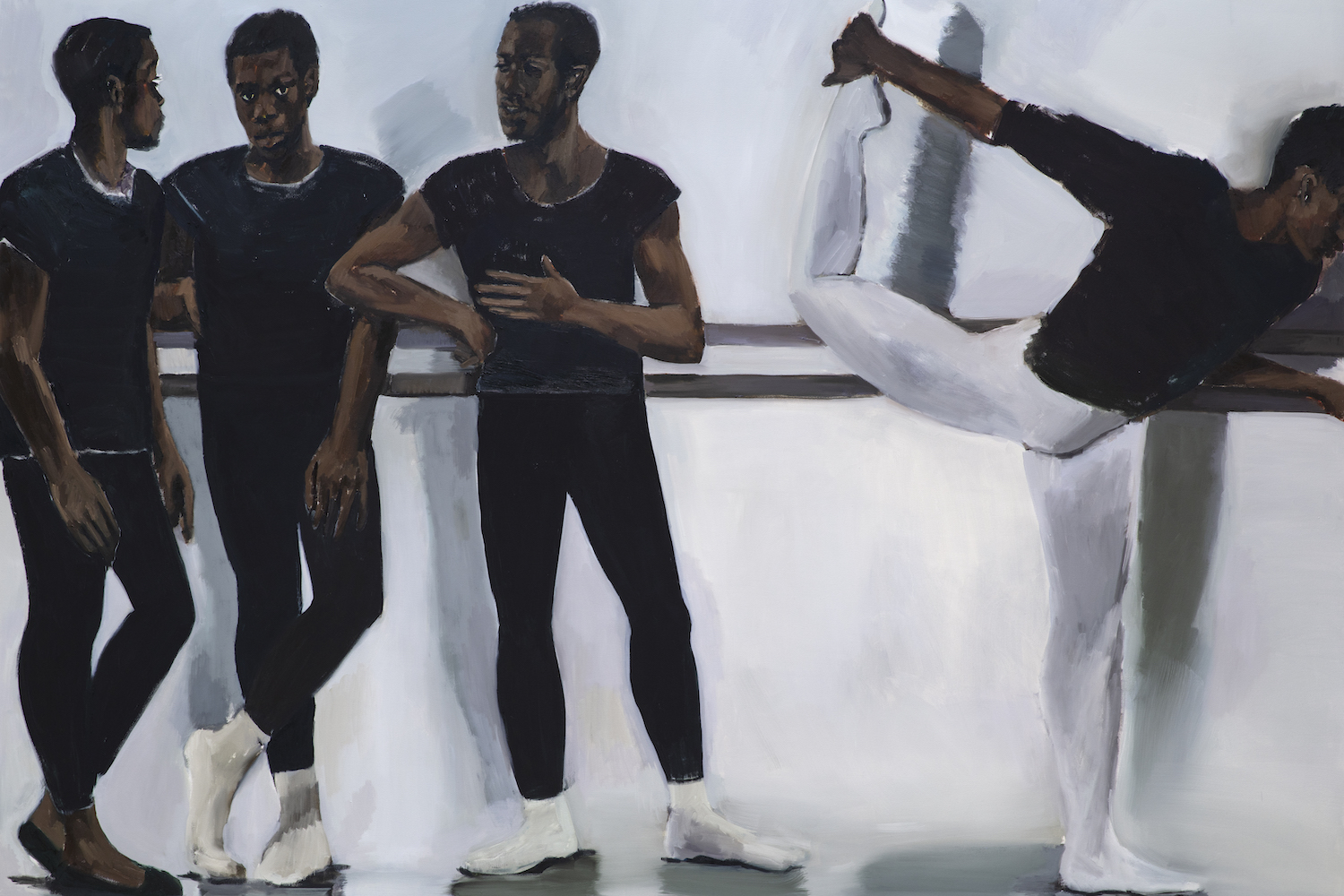Around the world, anti-racist protesters are toppling symbols of colonialism such as the statue of the slave trader Edward Colston, which was recently thrown into Bristol Harbor. The same anger now extends to the numerous Christopher Columbus monuments all over America and Spain. History is not only written but also erected on pedestals, projecting the shadow of the disasters its victors have caused.
The lush, untidy, and uncultivated garden in the backyard of the Geneva artist-run space Cherish faces another type of monument typical of the city: the glass-covered headquarters of the multinational corporation Procter & Gamble. This is where Russian-born, Vienna-based artist Sveta Mordovskaya toys with and dismantles the idea of the monument. In the garden, a display of second-hand kitchenware and trinkets, placed on the ground, welcomes visitors. Rainwater has filled the teapots and eggcups to the brim. Insects explore a cheap gypsum bust and owl statuette. Like mushroom fairy rings popping out of wet grass, the objects look arranged — in a curved shape akin to a big smile — by natural mystery rather than human (read: male) pride translated into prestige and verticality. Yet each object remains invested with the far-off memories of its previous owners, acting as memorials without hubris or monumentality.
Further down into the garden, two heavy transparent PVC sheets cover a pile of straw. Beneath the vinyl surface, humidity condensates. A recurrent material in Mordovskaya’s work, straw, when she uses it in a gallery, points to a desire to create a makeshift protective space for oneself. In this outside setting, however, the nest of straw promises to decay, the PVC sheets accelerating the entropic process by creating a warm and moist environment. Conversely, by compressing the straw, the PVC sheets freeze the pile’s shape as if it were a photogram. The site and non-site of the work collapse in a combination of decomposable and resistant materials.
The two other works in the sculpture garden1 are a big synthetic tumbleweed made out of shiny crumpled gift foils and a thin, human-scale tube covered with air-dry clay to which is attached a cloud of folded wire.
The self-effacing formal and material choices open up a dialectic of the artwork as a transient memorial detached from any authoritarian referent — a memorabilia of our industrial civilization after its transformation into junk by the next storm.


